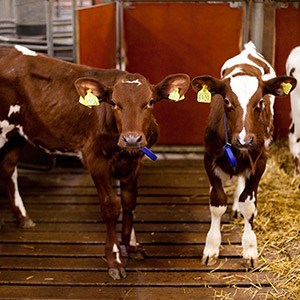Facts:
The project was financed by FORMAS and ran 2014-2016.

The aim of the project was to evaluate how routines to feed colostrum effects health, growth rate, Ig-status, behavior and feed consumption of calves.
The basis for a sustainable animal production with good animal welfare and health is set already in the newborn calf. Specific for newborn calves is that they are not supplied with immunoglobulins and therefore depend on passive transfer of maternal Ig from colostrum after birth. To ensure a safe intake, the routine with oesophageal tube (OT) feeding of colostrum has been introduced abroad and now also in Sweden. However, questions have been raised as to whether the routine is ethically defendable and if good calf performance is really obtained.
The aim of the project is to evaluate how routines to feed colostrum effects health, growth rate, Ig-status, behavior and feed consumption, and if there is an acceptance among public for the OT management practice. The study will be made with 60 heifer calves distributed in three groups. One group will be fed colostrum via an OT, the second group fed with a bottle provided with a nipple, and the third group fed as the second but kept together with the cow. The first week of life registrations will be made for Ig-status, growth rate, hormone status, behavior, feed consumption and health, thereafter the calves will be followed until six months of age, but with less frequent registrations. A survey will be carried out to find out whether there is an acceptance of the OT routine among farmers and the public. The expected results will contribute to advice to the farmers and be used as a science-based reference to animal welfare legislation.
Carlos Hernandez (HUV), Lotta Berg, Lena Lidfors and Helena Röcklinsberg (HMH) and Stefan Alenius (KV)
The project was financed by FORMAS and ran 2014-2016.